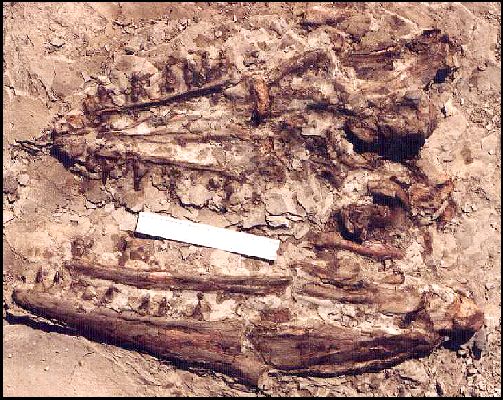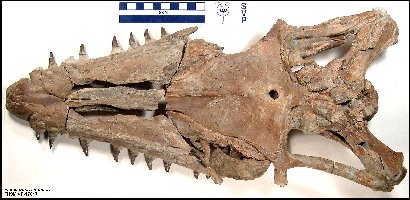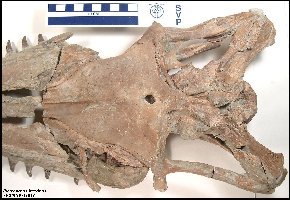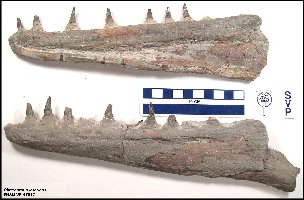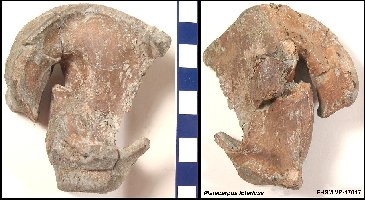| IMPORTANT NOTE: The recent
publication of an article in the JVP by Takuya Konishi and Michael Caldwell clarifying the
identification and relationships of the various species of Platecarpus will
necessitate some major changes in some of my web pages. Please note that Platecarpus
planifrons Cope (1874) is now identified as the most common species of Platecarpus
in the lower chalk (late Coniacian to middle Santonian), and P. ictericus (Cope,
1871) is the most common species of this genera in upper chalk (middle Santonian through
early Campanian). P. coryphaeus (Cope, 1872) is a junior synonym of P.
ictericus. The name Platecarpus tympaniticus (Cope, 1869) is now
limited to a single specimen (holotype) from Mississippi. The species that I had
previously identified as Platecarpus planifrons (above) is now
"unidentified" and possibly a new genus / species which we are working to
identify / describe. I consider this paper to be a major improvement in mosasaur
phylogeny. The citation is: Konishi, T. and Caldwell, M. W. 2007. New
specimens of Platecarpus planifrons (Cope, 1874) (Squamata: Mosasauridae) and a
revised taxonomy of the genus: Journal of Vertebrate Paleontology 27(1): 59-72. And
another revision.. Platecarpus
tympaniticus
is now the senior synonym over P. ictericus and P.
coryphaeus. Konishi,
T.,
Caldwell
, M.J. and
Bell
, G.L.,
Jr. 2010. Redescription of the holotype of Platecarpus tympaniticus
Cope 1869 (Mosasauridae: Plioplatecarpinae), and its implications for the
alpha taxonomy of the genus. Journal of Vertebrate Paleontology
30(5):1410-1421. |
